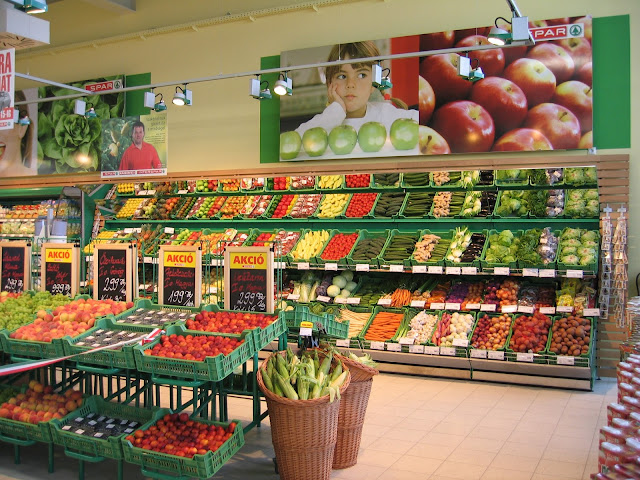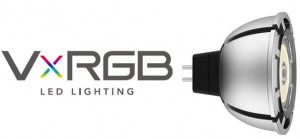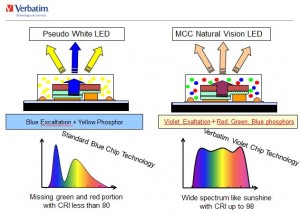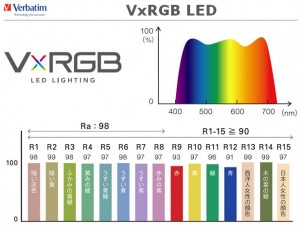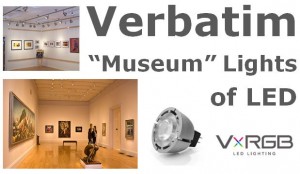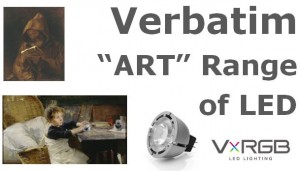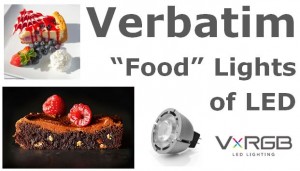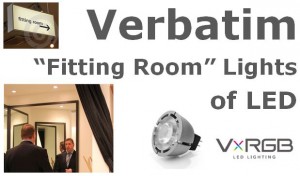TAG | led retail
23
Are pastel coloured uplights the key to retail success?
Comments off · Posted by admin in LED, LED downlights, Philips LED
The use of pastel coloured uplights in retail displays has been found to increase sales in a new study. The installation of the lights in a particular area of a store in Germany were found to increase basket values by six percent.
The same combination of coloured lights also increased customer visits to the revamped section of the store by 15 per cent when compared to an area lit with standard store lighting.
Philips Lighting produced the study in conjunction with major German grocer, Globus, with the expressed aim of finding lighting that increased sales.
‘As a retailer, to stay ahead of the competition, you have to create a multi-sensory environment and a ‘wow-factor’ in your stores,’ commented Norbert Scheller, store manager at the Globus supermarket in Saarbrücken where the experiment took place.
The researchers spent two months testing different lighting conditions in the supermarket. Three settings were tested, including the store’s uniform overhead lighting, regular spotlights and a combination of spotlights with pastel coloured uplights.
Retailers have traditionally lit stores using uniform, white, overhead lighting. The research showed that the 58 spotlights used in the experiment strengthened the appearance of products by increasing contrast.
Adding coloured uplighting, aimed at the ceiling, also helped to differentiate the promotional zone, making it more visible.
globus · LED downlights · led retail · led supermarket · led uplights · Novel Energy Lighting · philips led · retail lighting · shop lighting · supermarket lighting
Euroshop took place in Dusseldorf, Germany, last week. The event is the biggest retail themed trade show in the world and this year there were plenty of lighting developments to get excited about. From indoor positioning to interactive flooring, we have the low-down fresh from the Messe. Lux Review 14 March 2017.
gooee · indoor location tracking · indoor positioning system · interactive flooring · led retail · li-fi · Novel Energy Lighting · retail lighting
LUX magazine reports that like most people in the lighting business, I’m often asked by acquaintances for advice. Usually, my friend’s building project has come to a crucial stage. I receive an email with the subject line ‘Urgent lighting advice’, links to the John Lewis website and the comment, ‘What do you think of these???’
Needless to say, at this stage no one wants to hear me spouting off about design concepts or reinterpretations of the architecture. They want me to endorse their tasteful choice of luminaires from John bloody Lewis. My brother and his wife once proudly showed me their £4,000 installation of Chinese LED downlights which put splodgy pools of light on the carpet and nowhere else. ‘Very contemporary,’ I said.
No one, as far as I know, has ever acted on my advice. So I thought I’d compile a list of some general principles of lighting for my acquaintances to ignore. These are not all mine; most are accepted orthodoxies. And they’re general principles – for each a professional could come up with a further list of caveats and addendums. But if you follow them, I believe you’ll create a far better scheme than the average. And if it stops someone spending £4,000 on downlights, I’ll have done my job.
1 Use a professional lighting consultant if the budget permits.
2 Think first about the lighting you want to achieve rather than the technology.
3 Maximise daylight if you can.
4 Light for the people who’ll use the space and their tasks.
5 Invest in the interior: the secret of good lighting is having good stuff to light.
6 Layer the light: ambient, then accent and task.
7 Light the walls rather than the floor.
8 Light the ceiling rather than the floor.
9 Don’t be afraid of darkness (at least pools of relative darkness).
10 Never ‘floodlight’ a building – you’ll flatten it.
11 For exteriors, pick out architectural details unseen in the day.
12 Be brave enough to use colour in any scheme, but only as an element.
13 Don’t obsess about uniformity; it’s overrated.
14 Follow the codes and regs, but they’re no substitute for common sense.
15 The most efficient light is the one you’re not using – use design to reduce energy use.
16 It’s better to use lots of low-output lights rather than a few higher-powered ones.
17 Conceal or integrate the majority of light sources.
18 For groups of pendants or wall lights, use odd numbers of fittings such as three, five or seven to achieve the ‘harmony of repetition’. It works!
19 It’s better to use pendants decoratively rather than as the workhorses of a scheme.
20 Consider control at the outset – different tasks and times of day need different light levels and even colour temperatures.
21 If the controls aren’t simple to use, they won’t be used. Give users four labelled buttons (‘meeting’, ‘presentations’, ‘lunch’, for example, and an ‘off’).
22 Don’t assume compatibility between lamps, drivers and dimming controllers: test them.
23 Buy lamps (and even LED luminaires) in batches to ensure they match in colour and output.
24 Don’t assume a high CRI number will ensure good colour rendering (it doesn’t include strong reds, for instance). Find out the product’s R9 value.
25 Buy from reputable manufacturers – otherwise it’s a false economy.
26 Don’t be missold by optimistic maintenance factors. You don’t want a dim space in three
years’ time.
27 Know what warranty you’re getting by reading the small print. Better still, write your own.
28 Futureproof your project: Make sure you can replace failed lights with matching kit.
29 If there’s no maintenance plan, assume the scheme won’t be maintained.
30 Finally, if you can’t find all the numbers you need on a spec sheet, don’t buy the product.
Novel Energy Lighting supplies a wide range of cost-effective LED lamps and fixtures. These are cost-effective and deliver paybacks of less than 1 year, while lasting over 10 years. We provide full LED range at competitive prices. Most of our LED lights have up to 5 years warranty and 30 days satisfaction guaranteed. Moreover, these lights offer lifetime cost benefits with up to 90% energy savings and up to 50,000 hours of operational lighting. LED Lighting is recommended for cost efficiency and energy savings.
LED · led lamp · led lighting · LED lights · led retail · lights · retail lighting
18
Verbatim’s new VxRGB LED lamp for True-Colour performance
Comments off · Posted by admin in LED, Uncategorized
An introduction to a very interesting new LED product that is specifically designed for high-end clients in jewelry stores, museums, high-end retail stores, hospitality etc.
We now sell the brand new Verbatim VxRGB True Colour LED lamp. The VxRGB is a special (only one in their range currently). It is designed as a ‘True Colour’ lamp, based on completely new technology that renders the entire colour spectrum (unlike old CRI/Ra standards which are skewed and incomplete esp. with LEDs). This lamp is manufactured using a violet chip (instead of blue), and uses a mix of red, green, and blue phosphors instead of just yellow phosphor. During a Verbatim demonstration we looked at a few sample items using standard halogen, standard LED, and the VxRGB, and sure enough the VxRGB made the colours really vital and clear (e.g. the guys navy blue sports jacket was really navy blue instead of black!). The VxRGB lamp works best by installing it alongside regular LED lamps, as the regular LED lamps provide the lumens output power, allowing the VxRGB to do the true colour lighting.
Clients are encouraged to offer the True Colour lamp supplemented with the regular LED lamps as a complete solution. This is very new to market, so allows for a differentiating sales pitch.
Please contact us for product presentation and technical information.
shuttla
LED · led art gallery · led fashion · led food · led hospitality · led lamp · led lighting · led museum · led retail · Novel Energy Lighting · verbatim · vxrgb

